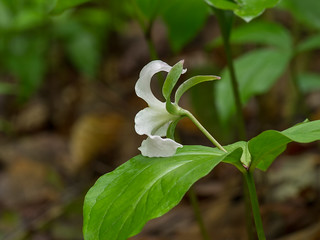I had recently seen some great images of a strange form of Trillium catesbaei or Catesby’s Trillium taken by Will Stuart, a flickr friend. So, I contacted him to ask him where he had seen them. When he told me, Jones Gap State Park, I asked if he would like to make another visit and show me where they are. Of course, like any botanist, he said “Yes!”. It was a 45-minute drive for me, but it was a 2.5 hour drive for him. It’s never too far to drive to see some neat flowers.
What makes these Catesby’s Trillium plants different from the “typical” plant, is the way that it holds its flowers. These flowers are held upright as in the image below:
whereas, the “typical” Catesby’s Trillium has a flower that droops below the level of the leaves:
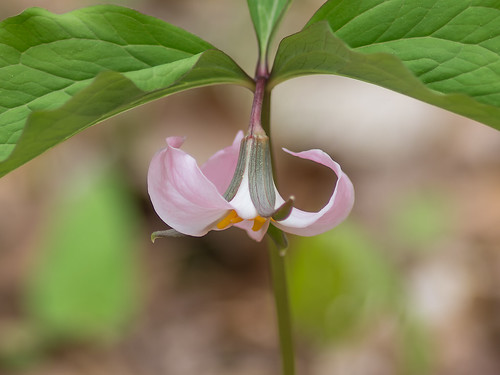
We arrived at the parking lot and collected our photography gear. Will indicated that we should take the Blue Trail to see the Trillium. So, off we went.
It was a perfect day for photography — cool and cloudy with no wind at all. We soon saw large patches of Tiarella cordifolia or Heartleaved Foamflower. There were hundreds of flower stalks in each group of plants. Even though I had recently photographed these, now was the perfect time to get another shot or two:

 |
 |
After hiking about a half mile up the Blue Trail, we began to see those strange, erect Catesby’s Trillium on the left side of the trail. There were groups of a dozen and groups of fifty or more. The heavy rain of the previous evening had taken its toll, though. Many of the nicer flowers had petals that were broken or otherwise damaged. As the flowers age, the color of the petals turns from white to deep pinkish purple. Even though there were hundreds of plants in total, it was very difficult to find good, undamaged flowers with pink petals. However I did manage to capture a few:
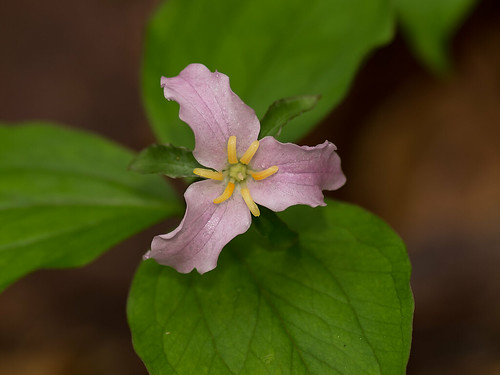

The white flowered plants seemed to be in better shape, having not been open as long as the pinker ones:
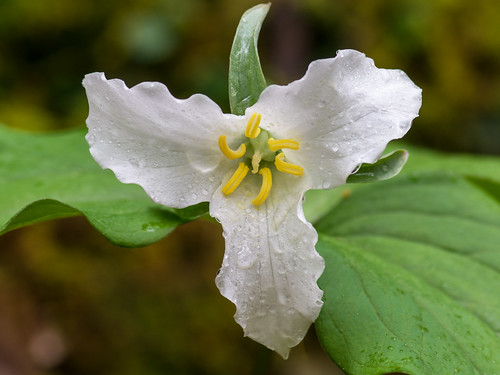
 |
 |
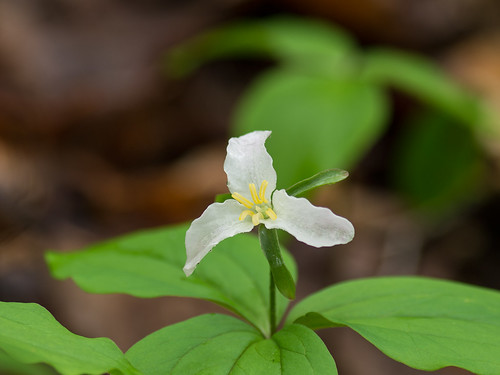
When I finished photographing the Catesby’s Trillium, I headed on back down the trail to the parking lot. Will had gone on ahead, since he had just photographed these plants in their prime a few days earlier.
On the way back, I stopped to photograph a strange plant that I had seen earlier — Conopholis americana also called Squaw root or Bear Corn. This plant is a parasite on oak and beech tree roots and is a member of the Broomrape family of plants. Normally, I see it after it is past peak bloom, but these plants were in perfect bloom.These specimens were about 5 inches (2 cm) tall:
 |
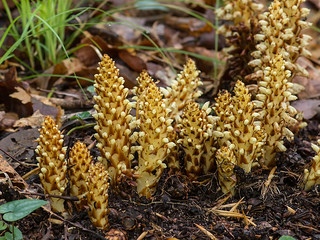 |
When I finally found Will, he was all set up at the base of a steep slope photographing some large Trillium vaseyi or Vasey’s Trillium. I had seen this species both at the Hwy. 25 road cut and at Whitewater Falls, but they were sill in tight bud. These, however were fully open and nodding below the absolutely huge leaf spread of the plant. The deep red/maroon colored flowers are about 2.5 to 3 inches (5 to 7 cm) wide. Since the flowers always droop below the leaves, it is important to have the camera positioned below the plant’s leaves to get an image of the flower. Since these were on a steep slope above us, the problem was solved!:
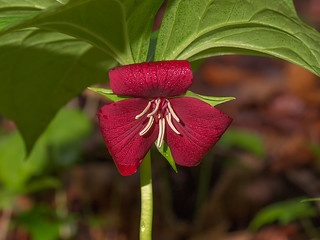 |
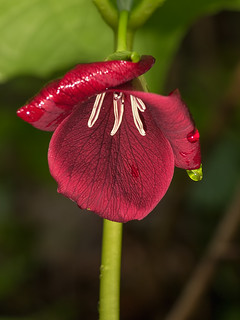 |
We had a great day botanizing in an area I had not visited in many years. It’s not unheard of to find someone from out-of-town who knows more about an area in your own “backyard” than you do. Thankfully, Will was happy to share this location with me in time to see the plants in flower. We packed up our gear and headed up the road about 30 miles (as the crow flies) to find one of South Carolina’s rarest plants — Helonias bullata or Swamp Pink…
— Jim

